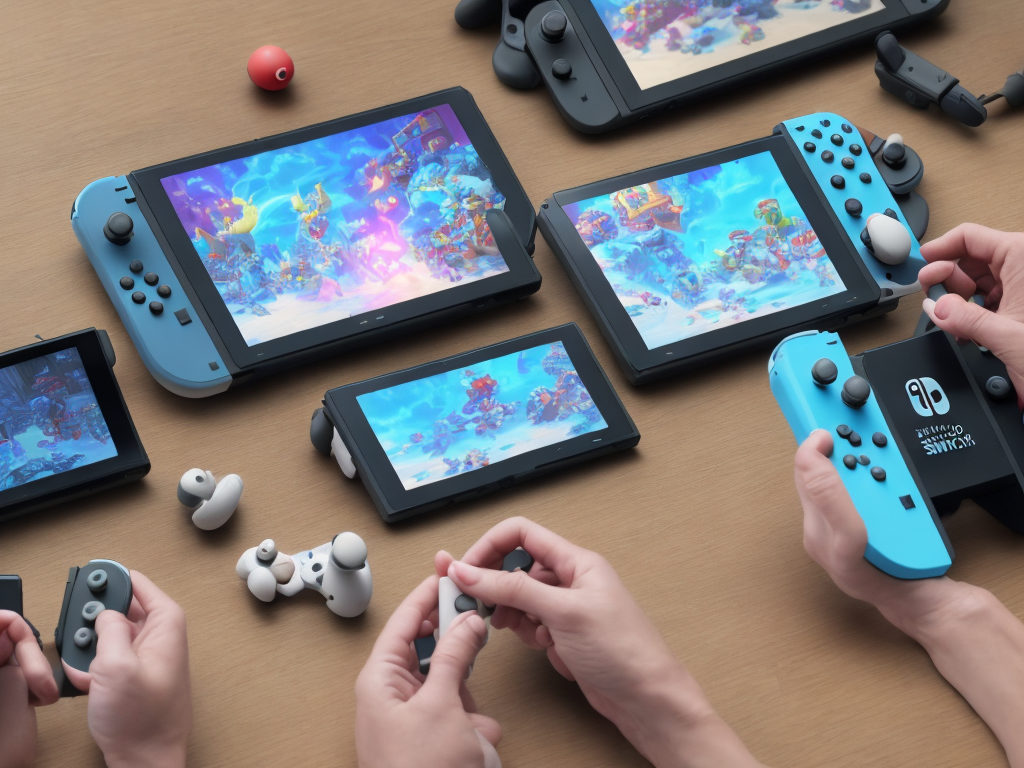
Gaming is a popular and lucrative pastime and Nintendo has been a major player in the gaming industry for decades. When the Nintendo Switch was released in 2017, it quickly became one of the most popular gaming consoles on the market. However, in 2019, Nintendo released the Switch Lite, a smaller and more portable version of the original console. In this article, we will explore the difference between the Nintendo Switch and the Switch Lite.
The Nintendo Switch is a hybrid console that can be played in one of three different modes: handheld mode, tabletop mode, and TV mode. In handheld mode, the Switch's main unit is attached to the Joy-Con controllers, and can be played like a traditional handheld console such as the Game Boy or Nintendo DS. In tabletop mode, the Switch is placed on a flat surface such as a table, and the Joy-Con controllers are separated from the main unit, making it ideal for local multiplayer gaming sessions. In TV mode, the Switch is docked, and users can play on their television screens using a Joy-Con grip or a Pro Controller.
The Switch Lite, on the other hand, is a dedicated handheld console, meaning that it cannot be played on a TV or in tabletop mode. The Joy-Con controllers are not detachable, and the console is smaller and more portable than the regular Switch.
The biggest difference between the Switch and the Switch Lite is their size and portability. The Switch Lite measures 3.6 inches high, 8.2 inches long, and 0.55 inches deep, making it much smaller and more compact than the regular Switch, which measures 4 inches high, 9.4 inches long, and 0.55 inches deep. This size difference makes the Switch Lite more portable, and it can easily fit in a pocket or smaller bag, making it perfect for on-the-go gaming.
Another major difference is the weight of the two consoles. The Switch Lite weighs 0.61 pounds, while the regular Switch weighs 1.02 pounds. This means that the Switch Lite is much lighter and easier to carry around, again making it more portable.
Another advantage of the Switch Lite is its improved battery life. The Switch Lite can last up to 7 hours on a single charge, while the regular Switch can only last up to 3 hours in handheld mode, depending on the game being played. This means that the Switch Lite is a better choice for longer gaming sessions on-the-go.
However, the regular Switch has some advantages over the Switch Lite. The Joy-Con controllers on the regular Switch are detachable, meaning that users can use them in a variety of ways, including in tabletop and TV modes. Additionally, the Joy-Con controllers have built-in motion controls, HD Rumble, and an IR motion camera, making them more versatile than the controllers on the Switch Lite.
Furthermore, the regular Switch has a larger screen than the Switch Lite, measuring 6.2 inches compared to the 5.5-inch screen on the Switch Lite. This difference in screen size may not be significant, but it is something to consider when deciding which console is right for you.
Another disadvantage of the Switch Lite is that it does not have a kickstand, which is a feature on the regular Switch that allows it to be placed in tabletop mode. This means that users cannot prop up the Switch Lite on a flat surface, and must hold it in their hands when playing games.
One final difference between the two consoles is the price. The Switch Lite is priced at $199, while the regular Switch is priced at $299. This price difference may make the Switch Lite a more attractive option for those who are on a budget.
In conclusion, the choice between the Nintendo Switch and the Switch Lite ultimately depends on the user's needs and preferences. If portability and battery life are important factors, then the Switch Lite may be the better choice. However, if users want the versatility of detachable Joy-Con controllers and the ability to play on a TV or in tabletop mode, then the regular Switch is the way to go. Ultimately, both consoles offer a unique and enjoyable gaming experience, and users should choose whichever one suits their needs best.
 Self-Instruct
Self-Instruct